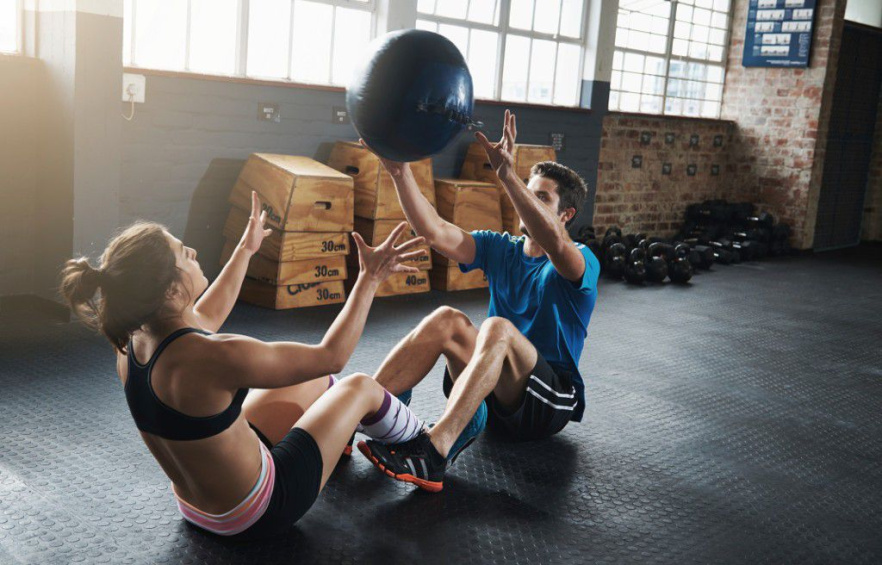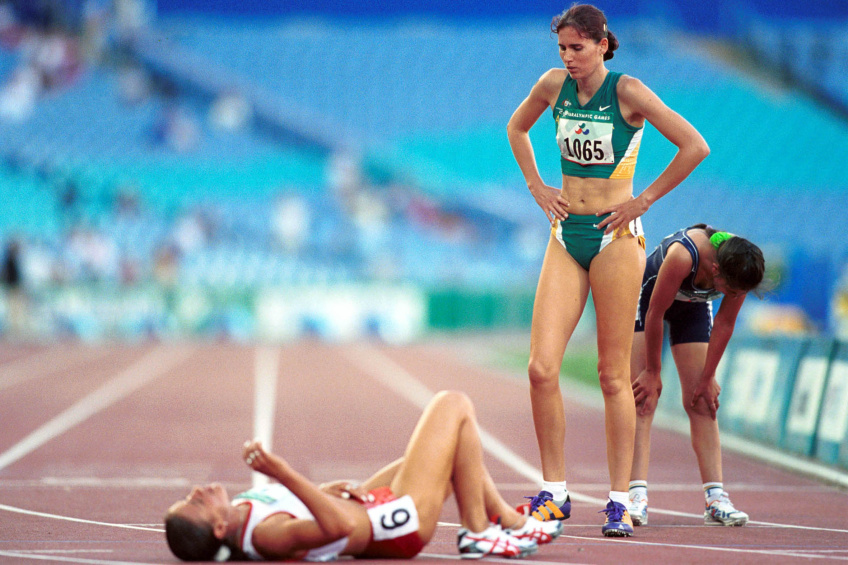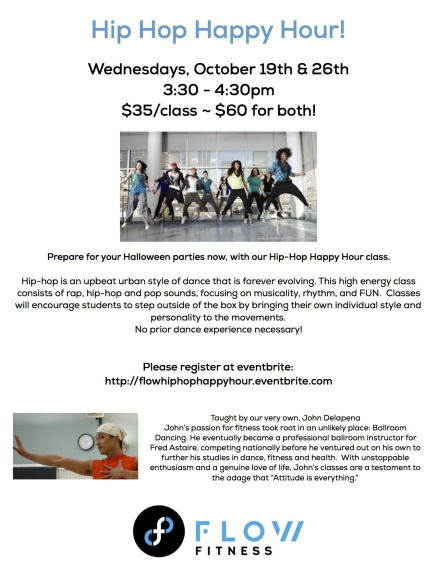 CategoriesEvent
CategoriesEvent CategoriesEvent
CategoriesEvent CategoriesLive Fit.
CategoriesLive Fit.The Last 100 Days…
This coming Friday, September 23rd, there are 100 days left in 2016. 100 days.
How are your new year’s resolutions coming along? Got ’em nailed? Or can you even remember what they were? Perhaps you didn’t make any resolutions, but the question remains:
How will you end 2016?
You still have 100 days to decide.
100 days to get educated. Learning one new thing each day. Youtube is great for this.
100 days to begin a practice (photography, eating healthy, reading, meditation, etc.)
100 days to declutter. Get rid of one thing every day, until the end of the year.
100 days to begin your fitness program, to get in touch with and learn to listen to your body.
100 days of gratitude. Be grateful for one thing each day.
100 days to practice being present.
100 days to practice self love. Find out what that means to you.
100 days to wind down your 2016, and enter 2017 going strong.
100 days to connect to the world around you.
There’s still time to make this your best year yet.
What will you do?
 CategoriesLive Fit.
CategoriesLive Fit.What’s the Best Time of Day to Work Out?
Do you ever wonder what time is the best time to work out? Research is mixed and there is no overwhelming evidence that points to a certain time of day that workouts will maximize results. However, there a lot of good reasons why working out in the morning might be worth trying.
1. Reduce your excuses to not work out: Late night deadlines, client emergencies or impromptu happy hours don’t happen at 7 a.m. Exercise early to reduce your chances of derailing your workout plans. Consistency and routine are key to maintaining a fitness plan.
2. Exercise gives you an energy boost during the day: The endorphins released from exercise give your body the feeling of more energy. Research has also shown exercise improves concentration and attention. Add a cup of coffee to your morning workout and you might find yourself being more productive at work.
3. Boost your metabolism: Studies show that exercise will boost your metabolism and you will enjoy the benefits of a boosted metabolism all day. Plus, you’ll be ready for breakfast, and eating a full breakfast will reduce your appetite for the remainder of the day.
4. Gyms are often quieter in the morning: The peak time in any gym is after work. Go when there is less of a crowd and you can get your workout in much more efficiently, and with less distraction.
5. Have more energy for your workout: Your body’s performance peaks in the early afternoon. However, most people don’t have the luxury of being able to work out mid-day. Your body is fatigued by the evenings, so mornings are your next best bet.
6. Set a healthy tone for the day: Everyone feels healthy after a good workout and many will follow up with a healthy meal so they don’t let their workouts go to waste. A morning workout sets a healthy tone for the day and will hopefully influence your behavior the rest of the day.
7. Consistency, consistency, consistency: Try working out in the mornings and you will see the same people on the same days. People who work out in the mornings are the most consistent and have developed a routine. See No. 1 for why.
 CategoriesMove.
CategoriesMove.Dropping the Dead Lift – Why Do It?
If you have come to Flow during our peak hours (usually 4:30-7:30pm), you have probably seen some pretty impressive Deadlifts lifts of 300, 400, and even 500 plus pounds in our free-weight area. If you haven’t had the fortune of seeing it, I am pretty sure you have heard, or felt the impact of the weights hitting the ground after each successful repetition. Though these feats of strength and power are pretty amazing to witness, they don’t come without question and concern.
The number one question I receive regarding our heavy dead lifters is: “Why do they have to drop their weights? Isn’t that dangerous? ” Believe it or not, a lot of the answer has to do with safety when performing this exercise.
However, before we get in to the “why”, I want to be clear that when I say drop the weight, I don’t mean literally letting go of the bar and letting the weights slam to the ground and roll all over the place (though some coaches do have their clients perform the lift this way). Instead, dropping refers to a quick and controlled lowering of the bar with very little resistance from the lifter. In this scenario the lifter basically keeps two hands in contact with the bar (while maintaining a neutral spine and proper posture) and follows the bar to the ground allowing gravity to do a majority of the work. Please do not get this method confused with the rapid fire “touch and go” deadlift that has been made popular by CrossFit over the past decade, as it can lead to a whole host of injuries over time. When dealing with heavy weight on your deadlifts, it is important to reset your posture, grip, positioning, and breathe after each rep. Now that I have addressed “how” to drop the deadlift, lets answer “why” you should.
The deadlift is a multi-joint movement that allows you (with proper technique, programming and nutrition) to lift a significant amount of weight equaling one and a half to four times a person’s body weight. While this is impressive in and of itself, it is also a lift that could lead to injuries, and the reality is that most of these injuries occur during the lowering (or eccentric) phase. During this phase the lifter puts in a lot of extra work to slow the bar down as it makes contact with the floor. This extra work places a high demand on your muscles and nervous system (especially when you are lifting super human poundage) which inevitably leads to increased muscle soreness (known as DOMS) and fatigue that may take several days from which to recover.
A two-three day recovery process is bad news for a person that needs to hit the gym several times per week to improve their performance. Further, when completing multiple repetitions, the demands of lowering the bar can lead to form breakdown on your successive pulls leading to injury and/or poor performance. Finally, (and slightly ridiculous) for people who would rather not add slabs of meat to their glutes and hamstrings, eliminating the lowering phase can decrease the hypertrophy benefits of a nice smooth eccentric movement. Most athletes who want the muscle building effects of the deadlifts without the risk of injuries or early fatigue will add “lighter” deadlift sets to their program to allow for an eccentric load worthy of Spartan-Like muscles.
In closing, though the loud “booms” from the gym floor can be a bit unsettling at times, please understand that experienced lifters are doing it for their health, well-being, and safety. They are not being reckless or haphazard, nor are they meatheads trying to get the attention of gym goers. At Flow, we pride ourselves in understanding our members and accommodating them with an atmosphere that allows people of all abilities to achieve each and every goal they have set for themselves. However, if you are that guy or girl who is dropping 25lb dumbbells while doing arm curls in front of the mirror, or dropping a 65lbs barbell from overhead, you need to stop because it is just not that COOL!
How a Personal Trainer Can Help You Meet Your Goals
Getting into better physical shape can be an exhausting challenge, and one that proves insurmountable for many people. Whether you’re looking to lose weight and burn fat or to build lean muscle, improving your level of physical fitness on your own can be difficult. That’s why personal trainers are of critical importance at most gyms and fitness facilities: They can offer knowledge, advice, encouragement, and incentive to those who are struggling to improve by themselves.
Did you know that while cutting calories is typically necessary for successful long-term weight loss, cutting too many could have the opposite effect? Did you know that you should rest your various muscle groups at least one full day between intense exercises and weight training? Do you know how to exercise your abdominals and obliques without putting your spine in danger of compression? Frankly, there’s so much to learn about kinesiology (the science of the movement of the body), nutrition, and fitness in general that most people don’t have the time and mental energy to remember everything that may be important during exercise. For that reason alone, hiring a skilled professional personal trainer can make your fitness goals more achievable and reduce the risk of injury. A personal trainer can carefully instruct you on the best ways to work certain muscle groups, or demonstrate how to safely increase your heart rate during cardio exercises without putting yourself in danger of medical issues.
Setting and Meeting Realistic Goals
One of the biggest problems people experience when trying to improve their health and fitness via an exercise regimen is dedication. Far too many people stop exercising or going to the gym after only a week or a month. With the combined encouragement from your personal trainer and the financial investment you’ve made in self-improvement, it will be much harder psychologically for you to simply quit and give up on your progress toward a better body.
A personal trainer will help you set realistic goals and will encourage you to meet them. Having a personal cheerleader who is motivating you at each workout can prove invaluable for those who have trouble sticking with an exercise practice. Your trainer will also help you hold yourself accountable when you backslide or skip exercise sessions, in addition to helping ensure your exercises are safe and properly executed.
Investing in a personal trainer is investing in your own lasting health and wellness. Contact Flow Fitness today to schedule a consultation with one of our dedicated, educated personal trainers, and see how easy meeting your fitness goal can be with the right help!
Injured? How to Help Your Body Recover While Staying Fit
So, you’ve been going hard at the gym. Great! There’s nothing better than seeing your hard work start to pay off. But if you’ve pushed yourself a bit too far and find yourself with an injury, it’s time to step back and give your body some TLC as it recovers and your muscles repair themselves. Refer to these tips as a launching point for a speedy and thorough recovery (without sacrificing your health or falling out of the fitness groove!).
Get enough sleep
What exactly is “enough” sleep? The National Sleep Foundation (NSF) recommends 7-9 hours per night for healthy adults between ages 18 to 64. A good night’s rest is so important because this is when our bodies complete vital processes such as muscle repair, growth hormone release, and so much more. The more shut-eye you get each night the better, as this allows your body to cycle through key sleep stages including stages 3 and 4 (when, according to the NSF, “blood supply to muscles increases, tissue growth and repair occurs, and hormones are released for muscle development”) and REM (when energy is restored throughout the body and brain). All this, combined with the ability to maintain a healthy immune system for whole body support, makes quality sleep the true superhero of post-injury recovery.
Eat your protein
Protein does a body good in many ways, and it’s especially important for athletes to consume the proper amount each day. According to estimates by the American College of Sports Medicine, endurance athletes should consume up to 1.2 grams per kilogram of bodyweight each day (approximately 120 grams for a 220-pound person), and resistance or strength-training athletes should consume up to 1.6 grams per kilogram (approximately 160 grams for a 220-pound person). The inflated daily protein values are considered necessary to promote repair of damaged muscle fibers and many more recovery processes. A conscious diet rich in proteins and amino acids can help active people meet nutrient requirements, but some protein supplements can add a boost when needed. Of course, it’s important to keep in mind, requirements vary from individual to individual based on size, type and level of activity, type and severity of injury, and many other health factors.
Try massage therapy
Massage therapy can best be used as a preventative measure to avoid injuries before they occur. Among many benefits, a regular massage program can help reduce muscle tension and alleviate soreness after exercise, according to the American Massage Therapy Association. Those with an active injury should use caution when it comes to deep-tissue and related massage techniques. If you are looking to try getting a massage as part of your recovery regimen, always consult with a trusted professional in advance.
Take it easy at the gym
Even if you’re sore or injured, you’re likely eager to get back to your regular workout routine. When the dreaded injury hits, nobody wants to allow it to undo all their hard work. You can still stay fit during this time — just don’t strain yourself too hard, as you could end up agitating and prolonging your injury. Warm-up and cool-down becomes more important than ever. You may also opt for personal training to ensure you’re using proper form and selecting safe and appropriate exercises, or consider trying a low-impact workout such as a yoga class.
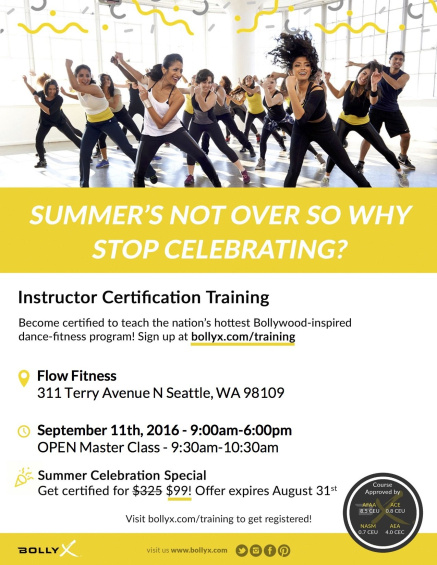 CategoriesEvent
CategoriesEventBollyX Class on Sunday, September 11th, 9:30-10:30am
Master Class is free for members, and open to the public (non-members $15).
RSVP for class here.
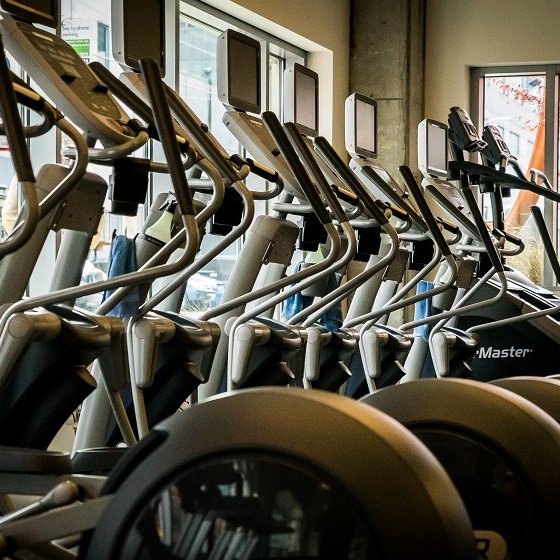 CategoriesMove.
CategoriesMove.Five Guaranteed Ways to Waste Time at the Gym
Everybody feels good about going to the gym (whether they like it is an article for another time). But during that time at the gym, are you really getting the most bang for your buck? Aside from the common distractions that we see at the gym, such as chatting with fellow members, watching Donald Trump put his foot in his mouth and searching for Pikachu under the leg press, there are other ways that can make your time at the gym less effective than it could be. Below are five common mistakes that people make that could wreak havoc on reaching your health and fitness goals
You have no plan: I have touched on this multiple times in various blogs, as I truly believe this is one of the biggest mistakes you can make when entering the gym. When I say a plan, I mean specifics like exercises, sets, reps, percentage of max and rest time, not “uuuuuh I’m doing chest and tri’s today.” Further, a plan should be divided into multiple 3-6 weeks “phases” in which the aforementioned variables change to ensure the body is challenged and can continue to make progress. Contrary to popular belief, you do not need to have 365 different workouts for each day of the year; making slight changes to your workout plan every four to six weeks will ensure far better results and allow you to track improvements more effectively.
Have no clue how to design a training program? Enlist the help of a personal trainer, or go online to receive coaching and programming from a reputable trainer
You don’t keep a journal: This is a subcategory of No. 1. Whether you decide to have a plan or not, at least write down what you did (this includes exercises, sets, reps, weights and rest time) so you can know what you have done and where you are going. A journal only costs a few bucks and can make a huge difference in your training and results. It also prevents you from getting injured by going too heavy on a particular exercise.
You “warm up” on cardio equipment: By pedaling on a bike, walking or jogging on a treadmill, or pumping back and forth on an elliptical trainer, you have only tackled one or two of the major components of a proper warmup. During your 10 minutes of wasted time on these pieces of equipment, you have done nothing to deal with knots (generally referred to as adhesion) found in your muscles. You have not addressed joint mobility in the ankles, hips and shoulders. You have not stimulated the nervous system. You have only worked in one of three planes (frontal, sagittal and transverses) of motion. You have done nothing to warm up the movements typically found in a comprehensive workout.
To sum it up, the body has not been properly prepared for the ensuing workout, and it will lead to poor performance. Instead, go through a 10- to 15-minute movement-preparation routine that incorporates foam rolling, joint mobilization and dynamic movements (squatting, kneeling, lunging, pushing, pulling, reaching, jumping, skipping, rotating) that put the body through various ranges and planes of motion and gives the nervous system a much-needed wakeup call. Further, this form of warming up ensures that you are improving muscular activation, joint mobility and flexibility on an ongoing basis. By doing warm ups properly, you will find that with each workout, you are squatting lower, recovering quicker, lifting bigger weights and feeling better outside of the gym. It is simply more bang for your buck!
You use light weights: To get your body to respond in a positive way (such as changes in body composition, increases in strength, increase in conditioning, improved range of motion), you have to stress the body to a point that it wants to make a change or adaptation in order to meet the implied demands. If you come into the gym and stay in (or below) your comfort zone, you have essentially done nothing but ensure you are the same person leaving the gym as you were coming in. If you are banging out sets of 15 reps of shoulder presses with five-pound dumbbells (but are capable of doing 3x that weight) because you don’t want to get bulky, guess what? You have succeeded; you won’t get bulky. But you also won’t lose body fat, get stronger, build fat-burning muscles or be in better shape. You will just be good at wasting your time pressing five-pound dumbbells over your head for 15 reps. The same is true with conditioning: if you are on the treadmill, chatting it up with your buddy or reading the Financial Times, be prepared for dismal results. Here is the truth: Fitness requires some hard work. Get comfortable being uncomfortable!
You don’t fuel your workout: When I had an athlete who basically had a shitty workout, I never once asked, “Did you have a tough day at school?” or, “Are you a little under the weather?” Nope. My first request was, “Tell me what you ate today.” Nine times out of ten, they ate like crap or ate nothing at all. Your body is going to perform as well as the fuel you put in. So if you come to a 6:00 p.m. workout and your last meal was at noon, get ready for a less-than-stellar workout.
As a rule of thumb, you should consume your pre-workout meal around two to three hours before your workout. (This varies greatly from person to person. I tend to be more of a 75 to 90 minute type of person.) The meal should consist of primarily slow-releasing carbohydrates (such as oatmeal, yams, brown rice, whole-wheat toast, certain fruits) that ensure a consistent source of fuel during your workout and keep blood-sugar levels in check. Limit your proteins to those that contain a low amount of fat (such as turkey, chicken, egg whites, yogurt) and try your best to avoid fatty meals and oils. I am also a fan of a little pre-workout pick-me-up, such as a caffeine-rich beverage like green tea. (Note, this is my only source of caffeine throughout the day. If you are one of those people who has four cups of coffee before noon, I’d avoid this step). Not only does a pre-workout meal give you the fuel to crush your workout, it also helps muscle recovery, protein synthesis (crucial for muscle growth) and prevents you from burning muscle during your workout (catabolism = very, very bad).
There you have it: Five things that I have found to negate the positives of coming to the gym. While I will always encourage going to the gym over not going to the gym, you need to make sure you are utilizing your time to the fullest. As we all know, time is a precious commodity (as is our health) and it behooves all of us to train smarter (as well as harder) to make your 30-, 60-, or 90-minute workout pay dividends in the long run. Do your best to avoid all of these common mistakes and it will change your life and make your time at Flow worth every minute!
 CategoriesLive Fit.
CategoriesLive Fit.Five Creative Ways to Stay Healthy When Boredom Hits
Are you bored with your exercise routine? Tired of trying to incorporate whole foods into your day? Do you feel like you might slap the next person who asks you how much sleep you got or if you meditated today?
This happens to the best of us. But before you slap anyone, incorporate one of the following five ideas to stay healthy when boredom strikes:
1) Do the opposite: If you’re a gym rat, get outside. If you typically work out solo, join a group class. Go to a studio for yoga, pilates or spinning. Try CrossFit. If you always exercise with a group, go it alone. Lift some weights. Row. Utilize stairs. Change how or what you eat. Have breakfast for dinner. Drink a smoothie for lunch. Try fasting. Do something to change up your routine.
2) Intensify: Take your workout up a notch. Lift more. Run faster. Swim longer. Walk hills. Whatever it is you do, do it faster, further or harder. Challenge yourself, from the inside out.
3) Get creative: Make a new playlist. Create a vision board of how you want health to feel. Do a photography project — take a selfie every time you get out to run, or photograph the beautiful meal you’ve created. Journal. Take some time to connect with what health means to you, which is not only exercise or food related. Expand your vision of health.
4) Go to the dark side for a given amount of time: Sometimes when we get bored, we crave something “bad,” such as eating a tub of ice cream or lounging around and watching movies all day long. I’ll admit, I do it. Indulge a craving. If get up early to exercise, take one day and sleep in. If you eat healthy six days, take one day or one meal and eat ice cream or nothing but cheese. Give yourself some freedom, yet pay attention to how it feels. Indulge, but do it consciously.
5) Pattern check: Every three months, throw a pattern check into your regime. Analyze your habits. Do you typically exercise in the same way every week? Do you eat the same things? Identify those habits that are serving you, and you want to do more of, as well as those habits that are stale. Change some up. Run a new route. Use a new machine. Take class from a different teacher. Join a new group. Shake up at least one of your patterns, and breathe new energy into your health practice. This often spills over into other areas of your life. Pattern check.
The bottom line here is to do something different. Boredom is a signal. It doesn’t necessarily mean stop, but adjust. Make a change and infuse new life into what has become ho-hum.
What will you do?
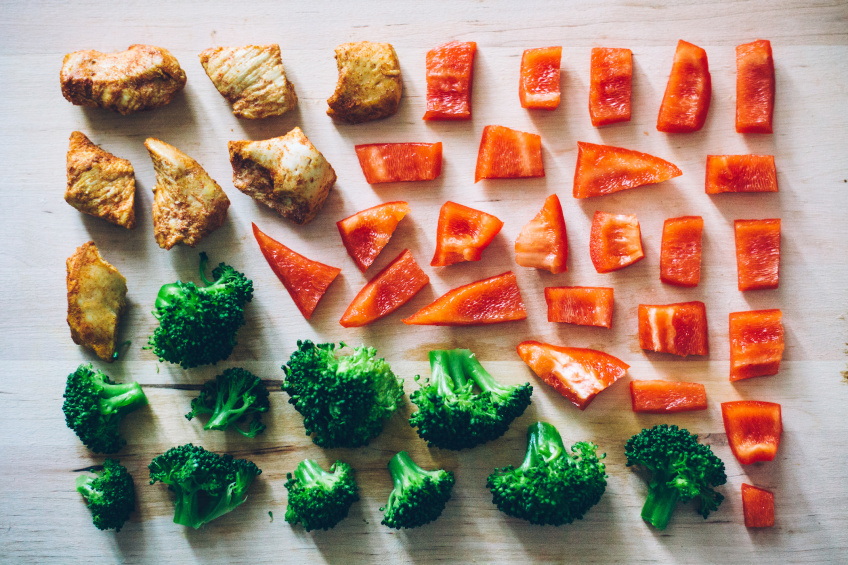 CategoriesNourish.
CategoriesNourish.How to Eat Pre- and Post-Workout When You Have Dietary Restrictions
Contrary to what you might expect, the hour or so spent in the elliptical or weight room is secondary compared to how you plan your meals before and after the main event. While the health benefits of a regular exercise routine certainly cannot be overstated, a diet filled with empty calories and minimal nutrients can and will work against you when it’s time to hit the gym. Fueling your body with the right foods both pre- and post- workout will produce the most payoff, turning nutrients into energy for stamina and improving body composition to help maintain your ideal weight and overall health.
Healthy, complex carbohydrates are your body’s best friend prior to a workout, while hearty proteins should be limited until afterwards (of course, remember to have a water bottle on hand at all times!).
You’ve likely heard of “carb-loading,” a common practice used by marathon runners to supercharge muscle energy stores in time for race day. Though mass carb consumption is intended for endurance athletes and not necessary before short workouts, the energy-boosting effects of healthy carbohydrates remain just as important. After your session, reach for lean proteins to help your body recover and build muscle to give you the upper-hand in future workouts.
Mileage can vary when it comes to these general guidelines — especially for those with special dietary needs or restrictions. Fortunately, there is often a way to get your share of healthy carbs and proteins from the foods on your grocery list.
Whole grain pasta, bread and rice are surefire ways for vegetarians to eat complex carbs, while some of these (namely most pastas) may not be vegan-friendly. Whole fruits and starchy vegetables such as sweet potatoes, squash and corn are healthy carb sources for both vegetarians and vegans. Beans or lentils and rice make a complete protein when eaten together, and can make a delicious pre- or post-workout snack or meal when sprinkled with dairy or vegan cheese. A scoop of natural peanut butter on an apple or whole grain toast can provide protein, carbs and healthy fats.
Lucky for those with Celiac disease or otherwise gluten-free lifestyles, pasta is not off the table with the variety of tasty gluten-free options on today’s market. Alternative carbohydrate sources include quinoa, corn tortillas and potatoes, while protein can be found in beans, healthy and gluten-free grains including brown rice, nuts and seeds, or protein-rich veggies such as asparagus, broccoli and brussels sprouts. For on-the-go energy, try a gluten-free protein bar such as Larabar and Luna bars.
Of course, there are dozens more special diets out there, and it’s always imperative to take any food allergies or preferences into account when planning snacks and meals. Whatever your approach, support your fitness goals with conscious eating to ensure you’re geared up to hit the floor at Flow!

